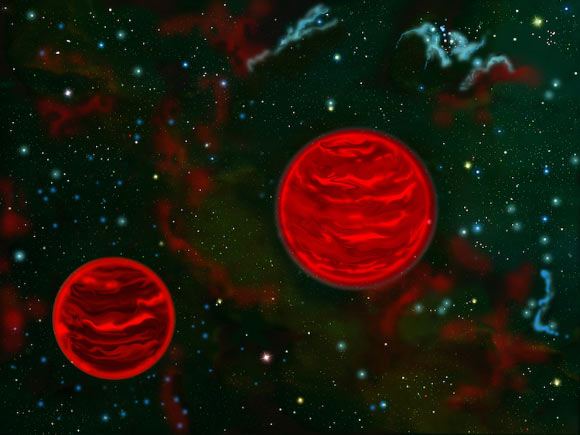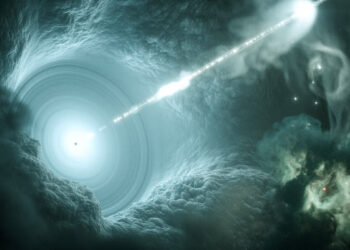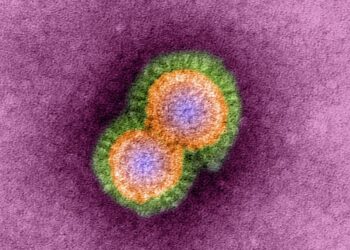The JuMBO 24 binary system resides in the Orion Nebula, a diffuse nebula located approximately 1,350 light-years away in the constellation of Orion.
“The James Webb Space Telescope (JWST) near-infrared survey of the inner Orion Nebula and Trapezium Cluster detected 40 Jupiter-mass binary objects (JuMBOs) and two triple objects,” said Professor Luis Rodríguez from the Universidad Nacional Autónoma de México and colleagues.
“These multiple systems are not associated with stars and their components have masses in the range of 0.6-14 Jupiter masses and separations in the plane of the sky between 28 and 384 AU.”
“The existence of these wide binaries is surprising since the current knowledge of star and planet formation cannot account for them.”
Using NSF’s Karl G. Jansky Very Large Array (VLA), the astronomers searched for counterparts to 40 JuMBOs.
Surprisingly, only one of these objects, JuMBO 24, exhibited a radio counterpart.
The radio luminosity of the two planetary-mass objects in the system is significantly higher than that detected in brown dwarfs.
This abnormality raises new questions and provides exciting research opportunities to further understand the nature of these free-floating planets.
While it is possible that the association between infrared and radio signals is coincidental, the team considers this to be highly unlikely, with odds of only 1 in 10,000.
“What’s truly remarkable is that these objects could have moons similar to Europa or Enceladus, both of which have underground oceans of liquid water that could support life,” Professor Rodriguez said.
“The detection of radio waves originating from both components of a double system of free-floating planets represents a significant milestone in our exploration of the Universe.”
“It also presents an exciting opportunity for further research into the potential habitability of planets beyond our Solar System.”
The study was published in the Astrophysical Journal…
Read the full article here







